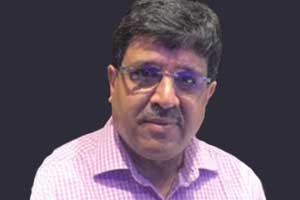- Home
- Editorial
- News
- Practice Guidelines
- Anesthesiology Guidelines
- Cancer Guidelines
- Cardiac Sciences Guidelines
- Critical Care Guidelines
- Dentistry Guidelines
- Dermatology Guidelines
- Diabetes and Endo Guidelines
- Diagnostics Guidelines
- ENT Guidelines
- Featured Practice Guidelines
- Gastroenterology Guidelines
- Geriatrics Guidelines
- Medicine Guidelines
- Nephrology Guidelines
- Neurosciences Guidelines
- Obs and Gynae Guidelines
- Ophthalmology Guidelines
- Orthopaedics Guidelines
- Paediatrics Guidelines
- Psychiatry Guidelines
- Pulmonology Guidelines
- Radiology Guidelines
- Surgery Guidelines
- Urology Guidelines
Telemedicine- Bringing Quality and Safety to Medical Practice -Dr VK Trehan

There was a news in a recent edition of Medical Dialogues that narrated a NEJM case report of a male nurse, who suffered in acute chest pain in a remote village of Nedlands, Western Australia. The nurse suspected the symptoms to be from acute myocardial infarction. He generated his own electrocardiogram and immediately sent it 150km away to the next medical facility via the emergency telehealth services.
Read also: How a Nurse performs Self Thrombolysis in MI to save his life: NEJM case story
The emergency physician 150 kms away, interpreted the electrocardiogram confirming it to be a case of ST-elevation myocardial infarction and conveyed the patient/nurse about the diagnosis. The patient was far away from the medical facility and there was the substantial time required to reach the next medical facility. The nurse was advised to take to the emergency medicine of Aspirin, Clopidogrel, sublingual nitroglycerin and intravenous heparin through cannulas, which was self-inserted by himself with the real-time video interaction with experts through the emergency telehealth services.
He attached his own defibrillator pad prepared the emergency medicines of adrenaline, atropine, and amiodarone and did a thrombolysis with tenecteplase on to himself and a few minutes later the ST segment was resolved and he was better in symptoms and he was safely ready to be shifted to the appropriate medical facility for completing the residual treatment.
The case report has raised a question - whether the treatment of thrombolysis can be done in the physical absence of trained medical personnel in case of acute myocardial infarction? While time is Myocardium and any delay in the treatment of reperfusion can lead to a permanent irrecoverable damage to the heart muscle, yet the treatment must be administered with full knowledge and caution.
However, the case report shows that now it is indeed possible with the development of technology where telemedicine can make a dramatic change in the outcome in the remote places.
Here, I am reminded of one of my own experience, when one of my professional colleague was doing angioplasty at a distant hospital and he encountered a complication of a rupture of a coronary artery. He contacted me on phone informing about the same. I advised him to use two smartphones and contact me on a video call showing me the videos of the patient, procedure and the console. With the two simultaneous smartphone video calls, I could assess the ongoing fluoroscopy, hemodynamics and even the ongoing procedures. Through the same video call, I could even guide him step by step and minute to minute in managing the complication and throughout the procedure, I felt as if I was personally present there- supervising the procedure and saving the life of the patient.
This is a simple example how the practice of medicine is changing with the help of technology. One radiologist through telemedicine can report 50 distant CT machines reports. One intensivist can guide a number of ICUs and even procedures influencing the quality of medical care and saving 1000 of lives.
I congratulate the team of doctors in Australia who could save the life of the patient guiding him through telemedicine and wish the same could be adopted safely in our country where medical personnel and medical facilities are unevenly placed.
Dr. VK Trehan is MD, DM, and Director Professor Department of Cardiology at G.B Pant Hospital, New Delhi.

Disclaimer: This site is primarily intended for healthcare professionals. Any content/information on this website does not replace the advice of medical and/or health professionals and should not be construed as medical/diagnostic advice/endorsement or prescription. Use of this site is subject to our terms of use, privacy policy, advertisement policy. © 2020 Minerva Medical Treatment Pvt Ltd